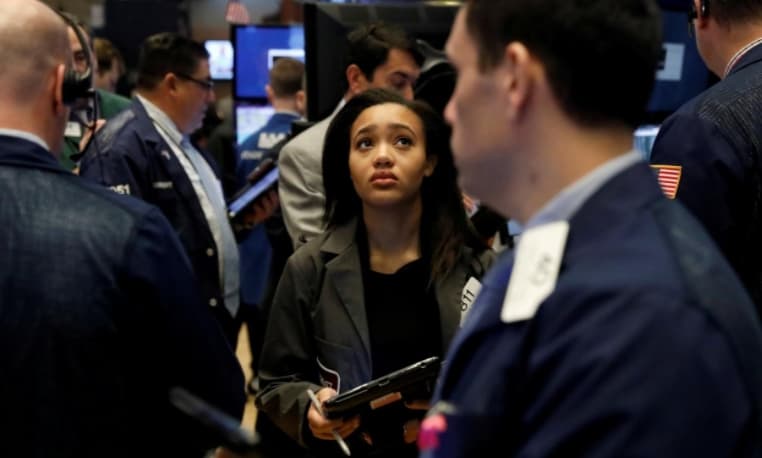
U.S. stock markets are unlikely to return to the unusually calm conditions seen last year, even though equities have already recovered more than half the ground lost in the recent selloff and traders have rapidly dialed down fear.
Stock market volatility spiked to a multi-year high in the selloff and some products that flourished in low volatility collapsed. A higher-volatility environment means the 1 percent stock market swings of the past two weeks will become commonplace, strategists said.
It is something that investors will have to get used to. The Cboe Volatility Index .VIX, the most widely followed barometer of expected near-term volatility for stocks, last year logged a historically low average of 11.
“We expect the current shock to herald a higher volatility regime,” said Jim Strugger, derivatives strategist at MKM Partners in New York.
The VIX reached a 2-1/2-year high of 50.30 on Feb. 6. Since then it has slipped to 17.60, still well above the record low of 8.56 hit in November.
“Fear has come down dramatically but certainly not to the level of complacency seen pre-correction,” said Randy Frederick, vice president of trading and derivatives for Charles Schwab in Austin, Texas.
“VIX futures seem to indicate that the VIX could trend down from current levels to maybe as low as 15 over the next couple of months, but there are few, if any, signs we’ll see 10 again any time soon,” he said.
The VIX is derived from the price of S&P 500 options and is an indicator of investors’ collective estimate of near-term gyrations for the benchmark stock index.
With the S&P 500 at 2,744, a VIX of 15 implies a daily move of the index of 21.54 points, or close to 0.8 percent, Frederick said.
There have been eight days this month when the S&P 500 logged a single-day move of more than 1 percent, compared with eight days in all of 2017.
“You are probably going to be bopping up and down based on stuff that happens,” said Phil Orlando, chief equity market strategist at Federated Investors in New York.
Several high-profile U.S. investors including Jeffrey Gundlach, known as Wall Street’s Bond King, and hedge fund manager Douglas Kass from Seabreeze Partners Management Inc see more stress ahead for stocks.
To be sure, a higher floor to volatility would not necessarily mean an end to the bull market in equities. The three years when the VIX logged its highest annual average, 1999, 2003 and 2009, coincided with 20 percent or bigger gains for the S&P 500.
“The velocity of the shift is what really matters here,” said Michael Purves, chief global strategist at Weeden & Co. “And the velocity of that shift is slow.”
“There’s no reason stocks can’t range higher with some higher volatility,” he said.
Ever-growing herds of volatility sellers and investors looking to buy the dip have quashed each instance of higher volatility over the last few years.
Despite the recent shock that led to the shuttering of popular exchange-traded products used to bet on stock market calm, traders are pouring money into that trade again.
The ProShares Short VIX Short-Term Futures ETF (SVXY.P), which gains as long as volatility declines or stays low, has drawn about $418 million on a net basis since Feb. 6, the day the VIX peaked, according to ETF.com data.
But things may be a little different this time. The Federal Reserve is shrinking its balance sheet and raising interest rates. U.S. corporate earnings could be the other factor to watch.
Analysts expect S&P 500 earnings to keep rising for the next few profit periods, peaking at 21.3 percent growth in the third quarter and moving to 17.8 percent growth in the fourth quarter, according to Thomson Reuters data.
“When earnings growth starts to roll over and go from positive growth to negative growth, a deceleration, you see volatility increase in the market place,” said Nick Kalivas, senior equity product strategist at Invesco PowerShares, in Chicago.
“I have been counseling clients to think about using products like low volatility or quality to help essentially mitigate some of the downside risks that are present,” he said.
Sharper equity market gyrations could serve up opportunities for stock pickers to shine.
“That will place more of an emphasis upon the quality of active management and stock picking, asset allocation and all the stuff that theoretically we get paid for because we are good at,” Orlando said.
